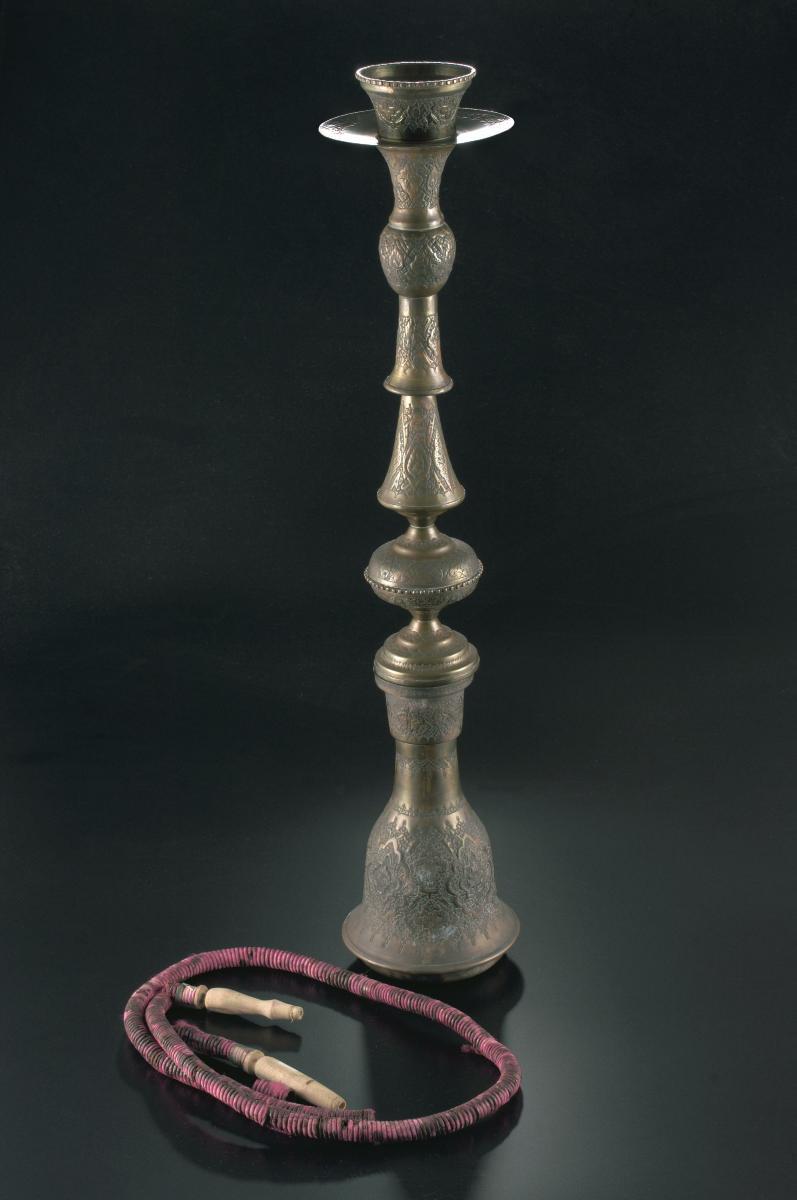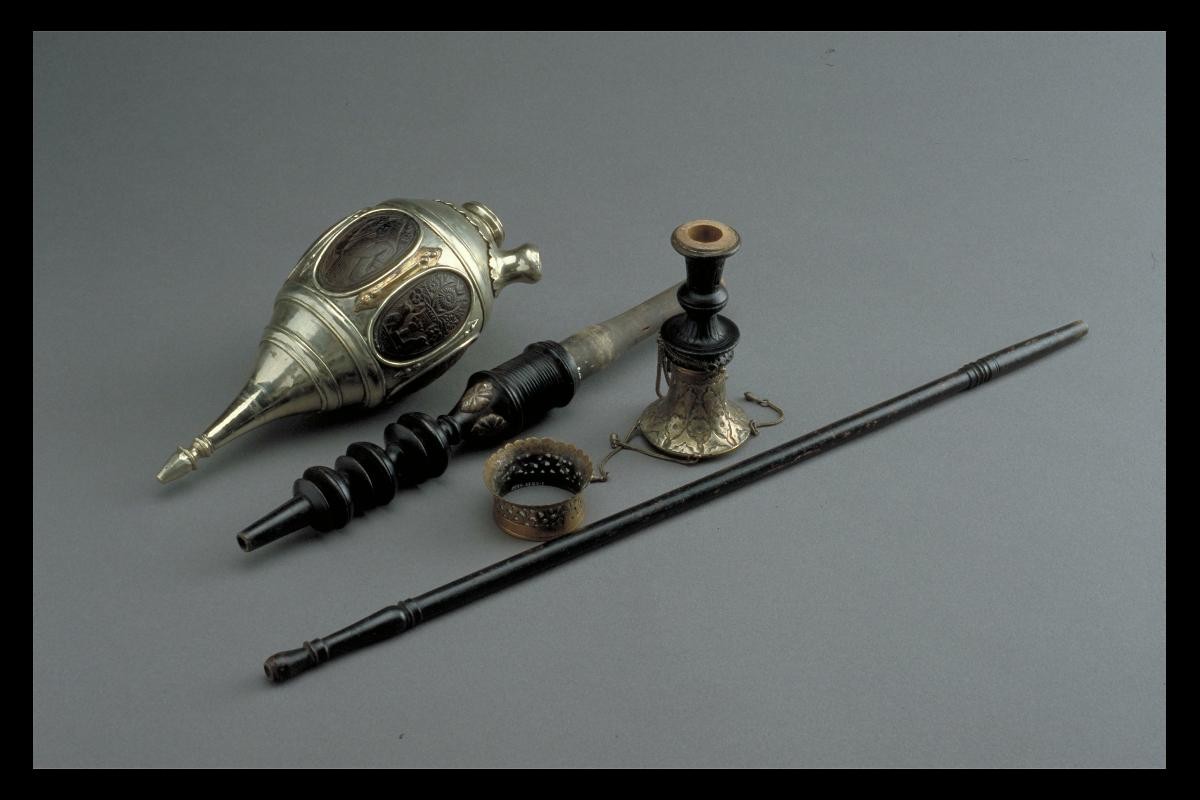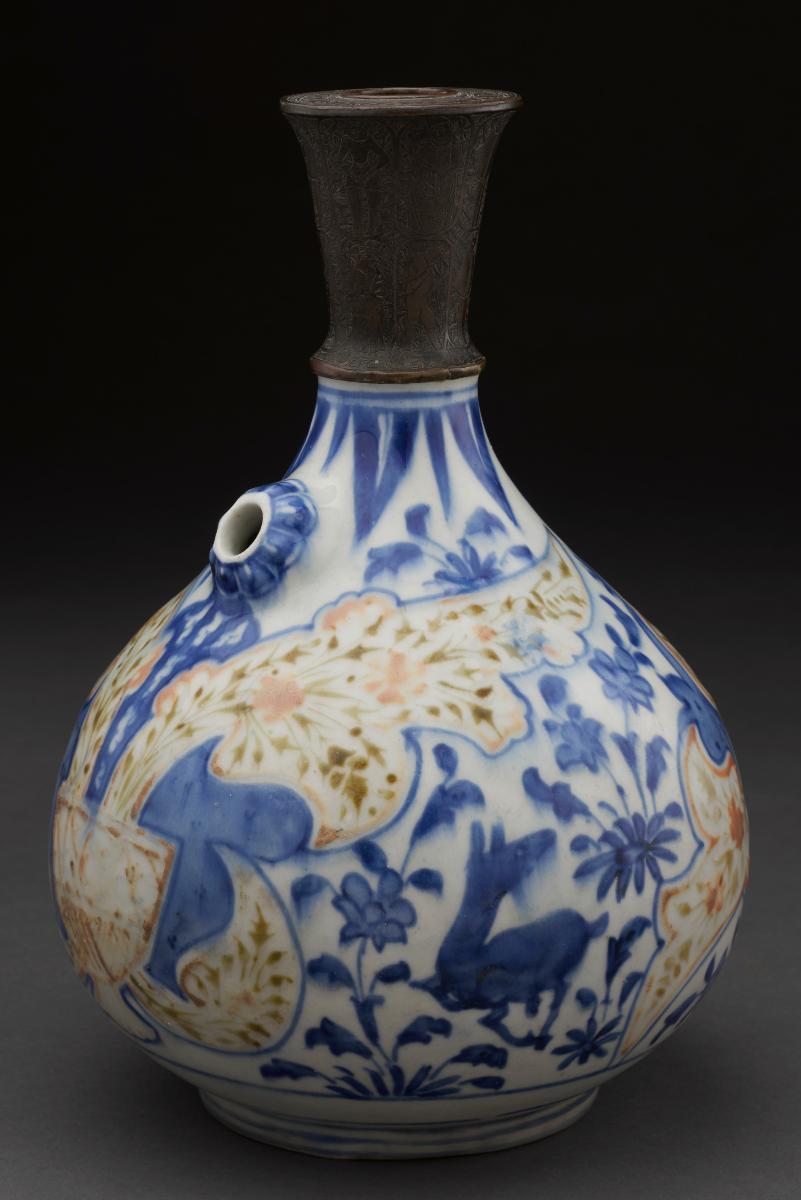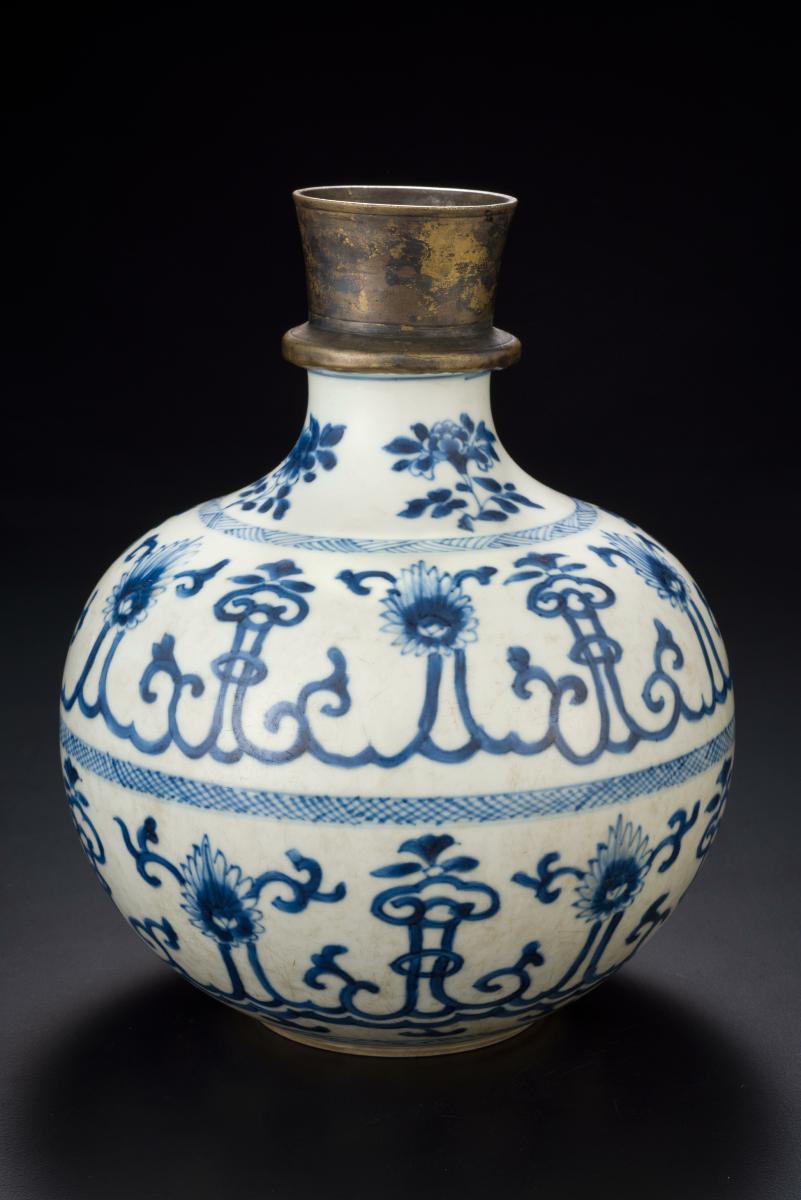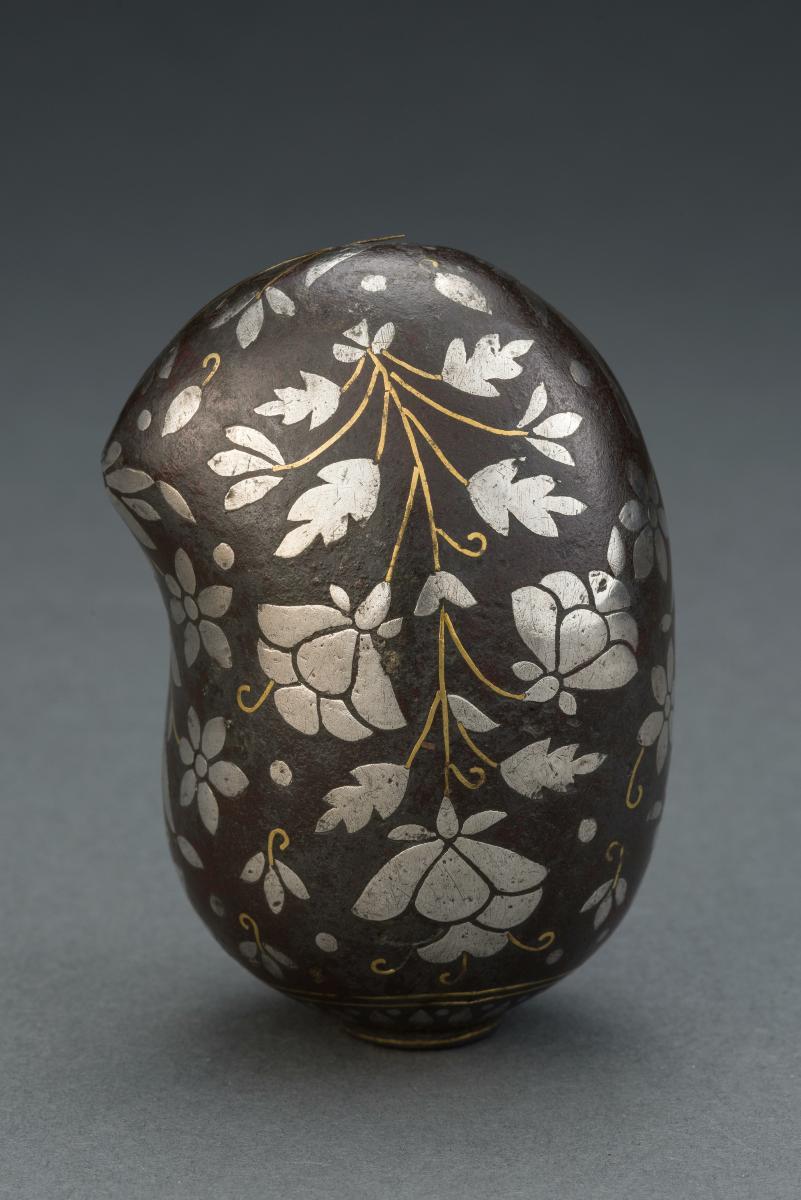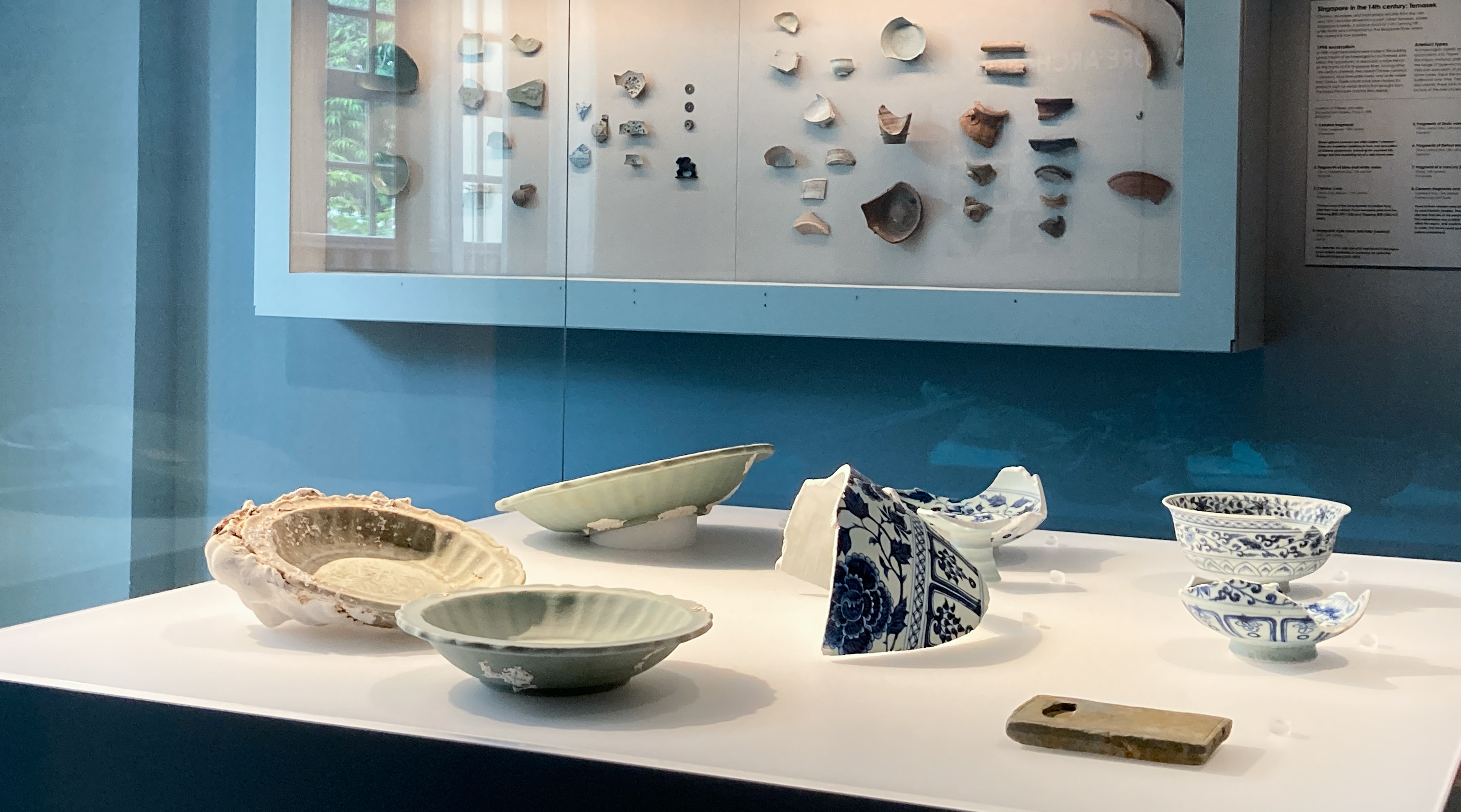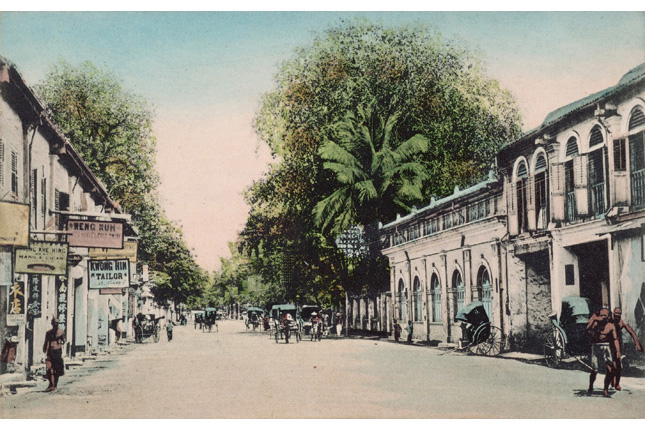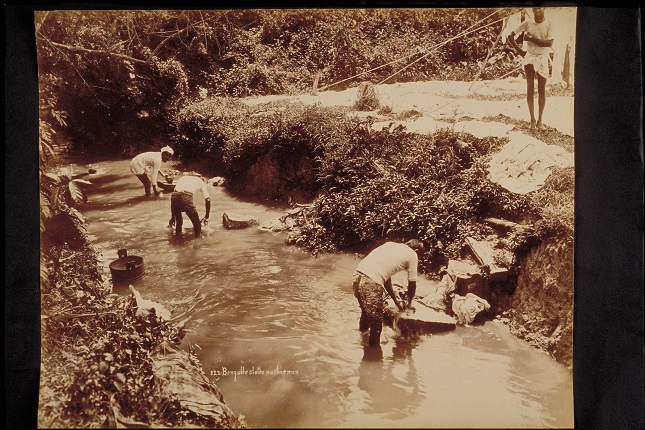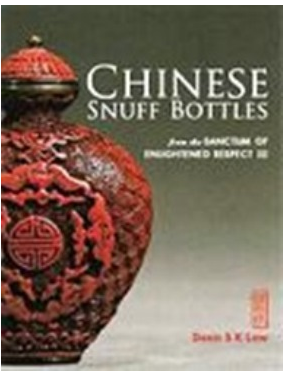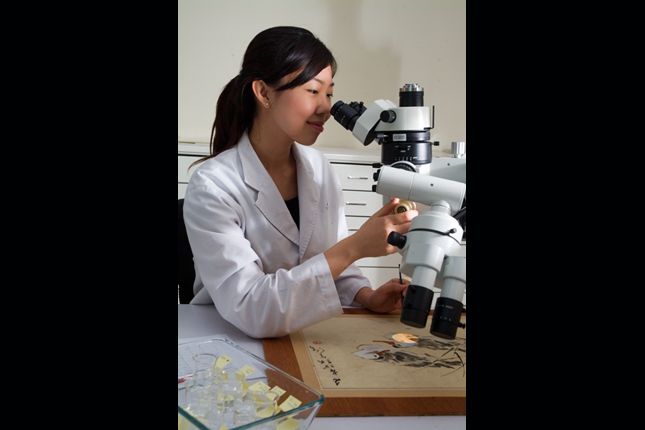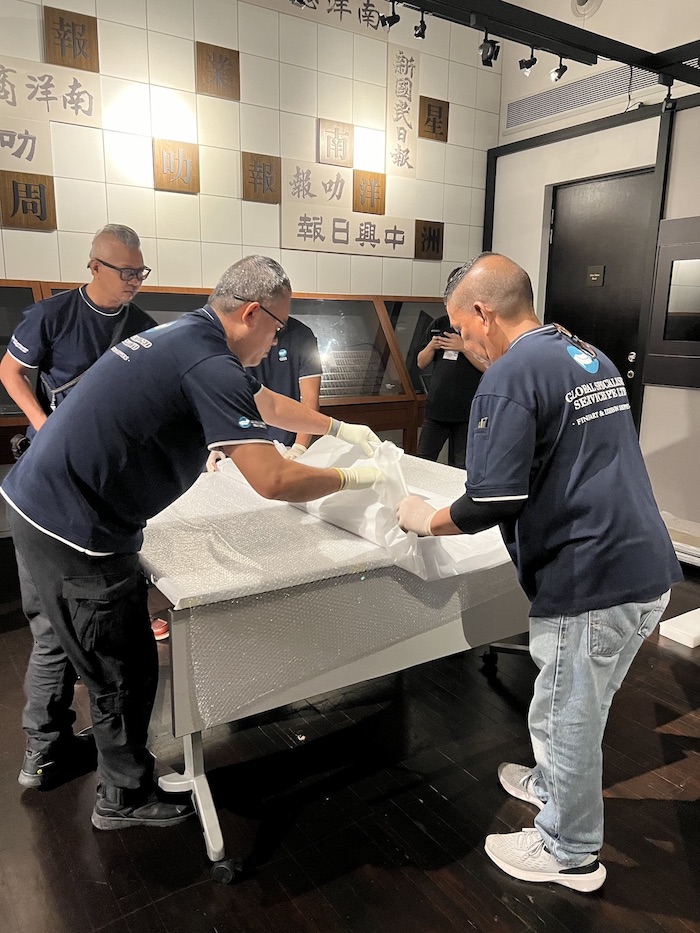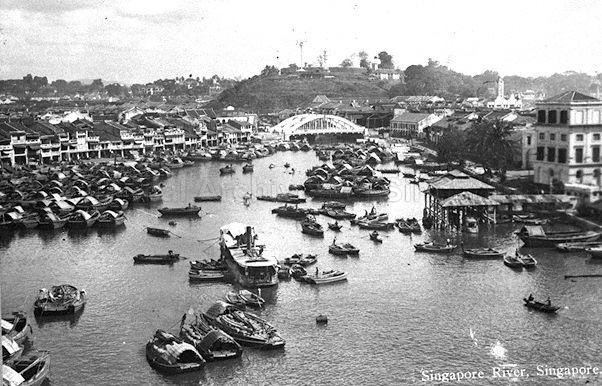Object size: XXXX-03248-001: L15.7 cm,
Object size: XXXX-03248-002: L24.0 cm,
Object size: XXXX-03248-003: L4.2 cm,
Object size: XXXX-03248-004: H27.0 x W15.5 cm (base),
Object size: XXXX-03248-007: Dia14.9 cm,
Object size: XXXX-03248-008: H4.8 x D9.0 cm,
Object size: XXXX-03248-005: H32.8 cm,
Unknown Type: XXXX-03248-006: H20.8 x W7.0 cm
This large water-pipe, known as a hookah or ‘ghalyun’ in Persian, is traditionally used by smokers in South Asia and West Asia. It comprises four main parts. This piece includes a wooden bowl, stem and pipe, and a brass body. Today, however, the pipe body is often made of glass and the mouthpiece is made in disposable plastic.The hookah is usually smoked at home with guests or with friends in cafés and is very popular in Iran. Tobacco is placed in the bowl at the top with hot coals. As air is drawn through the mouthpiece, the smoke travels into the body of the pipe which contains water. The smoke is filtered and cooled through the water when it reaches the smoker. In Iran, the use of water-pipes is believed to have been popularised during the Qajar dynasty (1794-1925). In West Asia, when smoking communally in parties, one usually doesn’t share the mouthpiece. When the smoker is finished, the hose is placed neatly on the table or handed to the next user with the mouthpiece facing away from the user.




